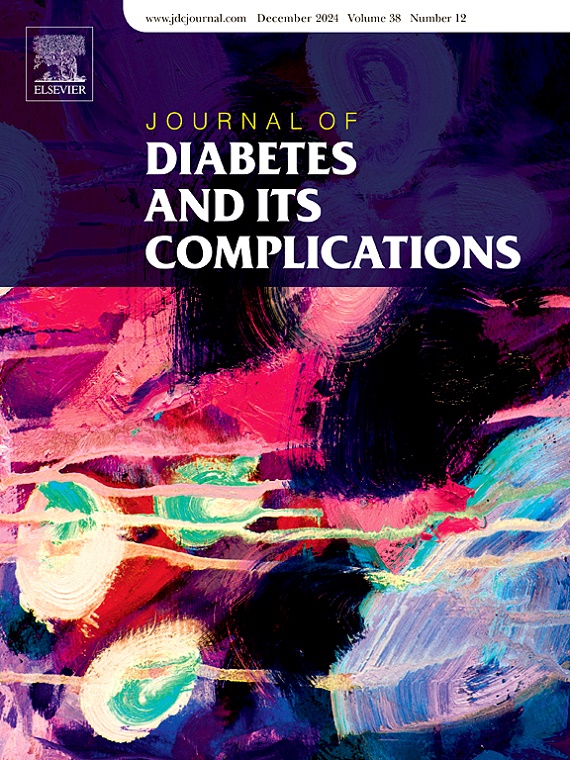The role of circRNA in insulin resistance and its progression induced by adipose inflammation
IF 3.1
3区 医学
Q3 ENDOCRINOLOGY & METABOLISM
引用次数: 0
Abstract
CircRNAs refer to a type of closed circular non-coding RNA without a 5′ cap or a 3′ poly (A) structure. They are largely distributed in the cytoplasm or localized in exosomes and cannot be easily degraded by RNA exonuclease activity. Their stable expression is broadly observed across eukaryotic species. Insulin resistance (IR) refers to the inability of insulin to exert its normal biological function, as manifested by the impairment of glucose utilization in peripheral tissues (e.g., muscle and fat tissues). IR is a key factor in the pathogenesis of Type 2 diabetes (T2D) and is closely associated with obesity. Recent studies have shown that certain circRNAs play critical roles in obesity-induced diabetes by regulating IR and participating in inflammatory processes. CircRNAs, with their multiple microRNA (miRNA) binding sites, act as miRNA sponges to eliminate the inhibitory actions of miRNAs and up-regulate the expression of target genes. CircRNAs play a significant role in regulating obesity-induced diabetes through their interactions with disease-related miRNAs. In the present study, we explored the biological characteristics of circRNAs and extensively discussed the role of circRNAs in the development of inflammation and IR in adipocytes, highlighting their potential as therapeutic targets for obesity-induced diabetes. Specific circRNAs (e.g., circARF3 and circ-ZNF609) have been identified as key players in modulating IR and inflammatory responses in adipose tissue. CircRNAs are emerging as important regulators of IR and inflammation in adipocytes, with significant potential for therapeutic intervention in obesity-induced diabetes. Further research is needed to elucidate the mechanisms underlying their actions and to explore strategies for targeting circRNAs in clinical applications.
circRNA在脂肪炎症诱导的胰岛素抵抗及其进展中的作用
环状RNA是指一种没有5 ‘帽或3 ’ poly (a)结构的闭合环状非编码RNA。它们主要分布在细胞质中或外泌体中,不易被RNA外切酶活性降解。它们的稳定表达在真核生物物种中广泛观察到。胰岛素抵抗(Insulin resistance, IR)是指胰岛素不能发挥其正常的生物学功能,表现为外周组织(如肌肉和脂肪组织)对葡萄糖的利用受损。IR是2型糖尿病(T2D)发病的关键因素,与肥胖密切相关。最近的研究表明,某些circrna通过调节IR和参与炎症过程在肥胖诱导的糖尿病中发挥关键作用。CircRNAs具有多个microRNA (miRNA)结合位点,可以作为miRNA海绵,消除miRNA的抑制作用,上调靶基因的表达。CircRNAs通过与疾病相关的mirna相互作用,在调节肥胖诱导的糖尿病中发挥重要作用。在本研究中,我们探索了环状rna的生物学特性,并广泛讨论了环状rna在脂肪细胞炎症和IR发展中的作用,强调了它们作为肥胖诱导糖尿病治疗靶点的潜力。特定的环状rna(如circARF3和circ-ZNF609)已被确定为调节脂肪组织中的IR和炎症反应的关键角色。CircRNAs正在成为脂肪细胞IR和炎症的重要调节因子,在肥胖诱导的糖尿病的治疗干预中具有重要的潜力。需要进一步的研究来阐明它们的作用机制,并探索在临床应用中靶向circrna的策略。
本文章由计算机程序翻译,如有差异,请以英文原文为准。
求助全文
约1分钟内获得全文
求助全文
来源期刊

Journal of diabetes and its complications
医学-内分泌学与代谢
CiteScore
5.90
自引率
3.30%
发文量
153
审稿时长
16 days
期刊介绍:
Journal of Diabetes and Its Complications (JDC) is a journal for health care practitioners and researchers, that publishes original research about the pathogenesis, diagnosis and management of diabetes mellitus and its complications. JDC also publishes articles on physiological and molecular aspects of glucose homeostasis.
The primary purpose of JDC is to act as a source of information usable by diabetes practitioners and researchers to increase their knowledge about mechanisms of diabetes and complications development, and promote better management of people with diabetes who are at risk for those complications.
Manuscripts submitted to JDC can report any aspect of basic, translational or clinical research as well as epidemiology. Topics can range broadly from early prediabetes to late-stage complicated diabetes. Topics relevant to basic/translational reports include pancreatic islet dysfunction and insulin resistance, altered adipose tissue function in diabetes, altered neuronal control of glucose homeostasis and mechanisms of drug action. Topics relevant to diabetic complications include diabetic retinopathy, neuropathy and nephropathy; peripheral vascular disease and coronary heart disease; gastrointestinal disorders, renal failure and impotence; and hypertension and hyperlipidemia.
 求助内容:
求助内容: 应助结果提醒方式:
应助结果提醒方式:


